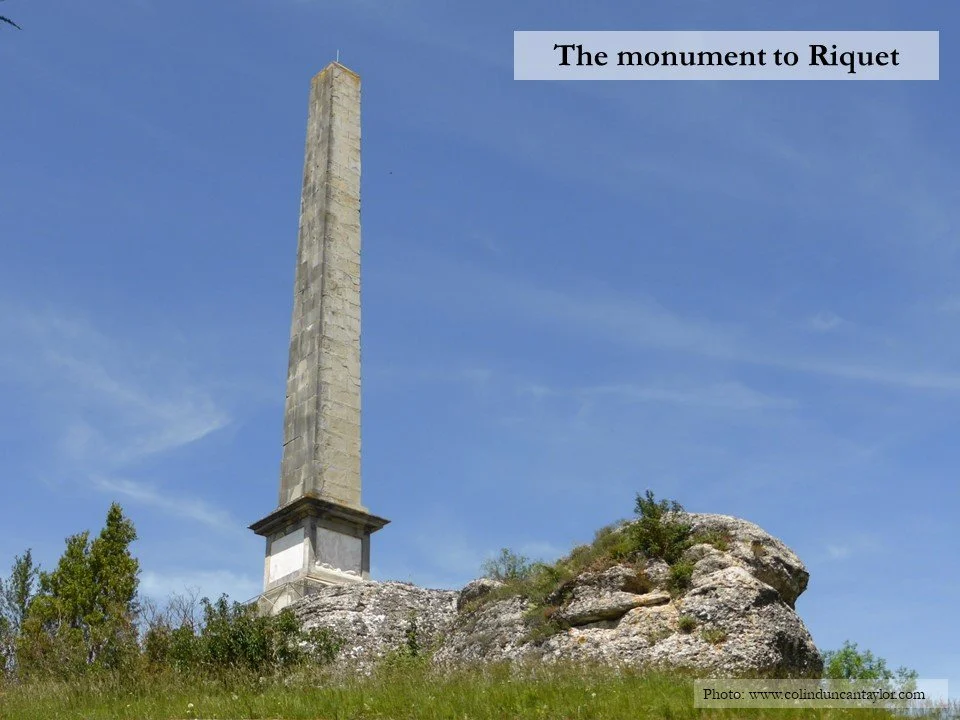So many reasons to visit Naurouze, not far from Toulouse
Naurouze is one of those places that seems to attract legends and history, as well as being notable from a geological and geographic perspective. It is located south-east of Toulouse, conveniently close to the main road between Villefranche-de-Lauragais and Castelnaudary.
A key to the Canal du Midi
Geographically, Naurouze lies on the watershed between the Atlantic and Mediterranean, which is why it played a crucial role in designing the Canal du Midi. A 19th-century engraving shows the canal’s builder, Pierre-Paul Riquet, waving a rolled parchment at his astonished companions and pointing at a spring called La Grave which bubbles from a rock and divides into two separate streams, one flowing towards the ocean, the other towards the sea. This was the moment when Riquet realised he would have to bring a significant part of the canal’s water supply to Naurouze because canals obviously need water at their highest point if they are to remain navigable.
Unfortunately, this event is a legend because it had long been known that Naurouze was a watershed. Riquet’s genius lay in working out how to collect and channel a large volume of water from the Montagne Noire to Naurouze.
Geological survivors
The Stones of Naurouze are an unusual rock formation, three giant boulders in a line divided into seven segments by deep fissures. According to geologists, these stones are the hardy survivors after millions of years of erosion have swept away the land around them. Our less-scientific ancestors invented legends to explain their presence, such as the one that says they were scattered by an angry giant along with the curse that when the stones join together, the end of the world will be nigh.
The monument to Pierre-Paul Riquet
Even in a place so rich in legends, Riquet is quite literally a towering presence. In 1825, his family decided that the Stones of Naurouze would make a perfect pedestal for a monument to his memory. Unfortunately, they also decided to protect their obelisk by encircling the site with a stone wall nearly three metres high, with a single entrance which is firmly sealed by locked iron gates.
A short stroll between the obelisk and the canal takes you down the Chemin des Légendes, past the engineer’s house and a flour mill built by Riquet and along a path lined with plane trees planted in 1809. This shady avenue traverses an octagonal island, 400 metres from side to side, encircled by a channel bringing water from the Montagne Noire to the canal. Originally, this island was a basin built by Riquet to store more water for his canal, but unfortunately it soon silted up and was abandoned to become a grassy meadow. Just beyond the island is the highest section of the canal.
A legendary meeting between Wellington and Soult
Another legend claims that after the Battle of Toulouse in 1814, Soult and Wellington met at Naurouze and signed their armistice. This too is untrue, although Marshal Soult did indeed stop at this mill on 13 April 1814, and it was here that he received Wellington’s aide-de-camp and a French officer who brought dispatches and newspapers from Paris telling him that Napoleon had abdicated.
Roman remains
Even that does not exhaust the supply of stories at Naurouze. Two thousand years ago, the Via Aquitania passed through here a few paces to the north, and the Roman town of Elusio grew up alongside it. In the twelfth century, the church of Saint Pierre d'Alzonne was built on the Roman remains, and inside the church porch you can see a collection of unusual discoidal gravestones. Just beyond the church is another site, Peyre-Clouque, which includes the remains of Elusio’s Roman baths and a collection of 52 stone coffins dating from the 6th century CE. Note that Peyre-Clouque can only be visited by prior arrangement (contact the mairie in Montferrand for up-to-date details).






